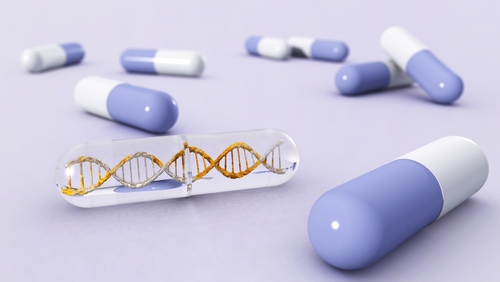#ISTH2020 – FLT180a Gene Therapy Shows Promise for Hemophilia B Patients in Phase 1/2 Trial

A single dose of the investigational gene therapy FLT180a can lead to clinically meaningful, sustained increases in the activity of factor IX (FIX), effectively preventing bleeds and the need for replacement therapies in people with severe hemophilia B, a Phase 1/2 clinical trial shows.
These results support the start of a pivotal Phase 3 trial of FLT180a, according to the researchers.
Trial findings were presented by Pratima Chowdary, MD, chief investigator of the trial, in a presentation titled “A Novel Adeno Associated Virus (AAV) Gene Therapy (FLT180a) Achieves Normal FIX Activity Levels in Severe Hemophilia B (HB) Patients (B-AMAZE Study),” at the 2020 Congress of the International Society on Thrombosis and Haemostasis.
FLT180a is an experimental gene therapy for hemophilia B being developed by Freeline. It uses the company’s adeno-associated virus (AAV) protein shell, called AAVS3, to deliver a functional version of F9 — the gene that provides instructions to make FIX — to liver cells. FIX is the blood-clotting protein missing in people with hemophilia B.
The safety and effectiveness of four single doses of FLT180a are being investigated in adult men with moderately severe to severe hemophilia B participating in a Phase 1/2 trial (NCT03369444) called B-AMAZE. The study, which will enroll an estimated 24 patients, is still recruiting at several sites in the U.K., U.S., and Italy.
B-AMAZE has an adaptive design that allows investigators to either increase or decrease the dose at which FLT180a is administered to rapidly identify that which most effectively allows patients to maintain their FIX activity levels within a normal range (50–150% of what would be considered normal).
In addition to determining the best dose to restore blood clotting and lessen or eliminate the need for additional prophylactic (preventive) treatments, the trial is also aimed at establishing a strategy to prevent and control transaminitis (high levels of liver enzymes), one of the most common side effects of AAV gene transfer that may lower the production of FIX.
“Transaminitis is the single biggest risk factor for loss of the effect of gene therapy, because once you have transaminitis, you lose expression of the protein, and once it is lost, it is practically irreversible,” Chowdary said in an interview after her presentation.
“I think [B-AMAZE is] one of the first studies that has implemented upfront immunosuppression [to manage and prevent transaminitis] for all patients,” she added.
Previous data from the first eight men treated in B-AMAZE showed that FLT180a was able to increase and maintain FIX activity within a normal range, when given at a dose of 9.75×1011 vector genomes per kilogram (vg/kg).
New findings presented at the meeting included data from 10 men with severe hemophilia B who received one of four doses of FLT180a: 4.5×1011 vg/kg, 7.5×1011 vg/kg, 9.75×1011 vg/kg, or 1.5×1012 vg/kg.
The first two patients who received the lowest dose of FLT180a (4.5×1011 vg/kg) saw their FIX activity levels rise and stabilize just below the normal range (approximately 40%) for more than two years. None of the patients developed transaminitis. The observed FIX levels were in line with mild hemophilia B.
A slightly higher dose (7.5×1011 vg/kg) led to a modest increase in the levels of FIX, which was enough for one of the two patients dosed to reach the normal range. Both had transaminitis with different severity that was managed with methylprednisolone and tacrolimus.
For the four men who received a lower 9.75×1011 vg/kg dose, FIX activity levels normalized three weeks after treatment. In the two men who have been followed for six months, FIX activity remains within a normal range.
In this group, a preventive combination therapy of corticosteroids with the immunosuppressant tacrolimus seemed to be effective at preventing transaminitis during the high-risk phase, which is 4–16 weeks following treatment with FLT180a.
Of the two patients who received the highest dose of the therapy (1.5×1012 vg/kg), one saw FIX activity rise beyond normal levels and had to be started on prophylactic anti-coagulation treatment with apixaban four weeks after receiving FLT180a. At week 33, the patient stopped treatment with apixaban after experiencing a possible bleeding episode in his elbow.
However, a few days after stopping treatment with apixaban, he had an episode of thrombosis and was restarted on anti-coagulants.
None of the participants developed neutralizing antibodies against FIX or experienced infusion reactions.
According to the investigators, the findings indicate that a “dose between 7.5 to 9.75×1011 vg/kg can potentially create sustained, normal FIX activity levels in patients with severe [hemophilia B].”
“Over a period of two years, we also learned what is the right combination of immunosuppressible immunomanagement strategy that will allow us to prevent and manage the transaminitis,” Chowdary said. “We believe strongly that prophylactic immunosuppression would be the right thing.”






